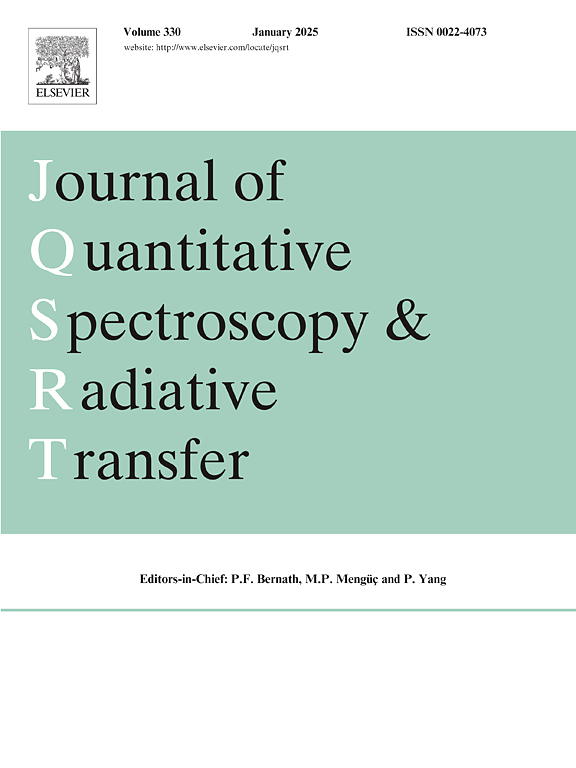烟尘气溶胶的激光雷达后向散射模型
IF 1.9
3区 物理与天体物理
Q2 OPTICS
Journal of Quantitative Spectroscopy & Radiative Transfer
Pub Date : 2025-06-24
DOI:10.1016/j.jqsrt.2025.109532
引用次数: 0
摘要
气溶胶激光雷达遥感依赖于背散射光的解释来检索感兴趣的粒子特性。本研究提出了一种基于瑞利-德拜-甘斯分形聚集体(RDG-FA)近似的新型烟尘或黑碳气溶胶后向散射分析模型。利用该模型推导出常用激光雷达相关参数的简单表达式,包括差分后向散射截面、激光雷达比(LR)、质量后向散射系数(MBC)、后向散射色比(CR)和Å ngström指数(BAE)。研究了这些激光雷达参数随波长、尺寸和老化的变化规律。主要发现包括LR的普遍下降,以及随着黑碳聚集体的增长,CR和BAE对气溶胶大小的明显依赖,无论是新排放的还是老化的煤烟。这些发现强调了在黑碳的整个生命周期中模拟这些参数变化的能力,捕捉了从链状新排放颗粒到更球形的老化颗粒的演变过程。此外,本研究还证明了RDG-FA后向散射模型在计算关键激光雷达参数和改进烟尘气溶胶产品检索方面的潜力。本文章由计算机程序翻译,如有差异,请以英文原文为准。
Lidar backscattering model for soot aerosols
Aerosol lidar remote sensing relies on the interpretation of backscattered light to retrieve particle properties of interest. This study presents a novel analytical backscattering model for soot or black carbon aerosols, based on the Rayleigh–Debye–Gans for Fractal Aggregates (RDG-FA) approximation. This model enables simple analytical calculation of key lidar parameters such as the differential backscattering cross-section, lidar ratio (LR), mass backscattering coefficient (MBC), along with the backscattering color ratio (CR) and Å ngström exponent (BAE). The behavior of these lidar parameters is investigated as a function of wavelength, size, and aging. Key findings include a general decrease in LR, along with a clear dependence of CR and BAE on aerosol size as black carbon aggregates grow, for both freshly emitted and aged soot. These findings highlight the ability to model the variations of these parameters throughout the life cycle of black carbon, capturing the evolution from chain-like freshly emitted particles to more spherical aged particles. Furthermore, this study demonstrates the potential of the RDG-FA backscatter model to calculate key lidar parameters and improve the retrieval of soot aerosol products.
求助全文
通过发布文献求助,成功后即可免费获取论文全文。
去求助
来源期刊
CiteScore
5.30
自引率
21.70%
发文量
273
审稿时长
58 days
期刊介绍:
Papers with the following subject areas are suitable for publication in the Journal of Quantitative Spectroscopy and Radiative Transfer:
- Theoretical and experimental aspects of the spectra of atoms, molecules, ions, and plasmas.
- Spectral lineshape studies including models and computational algorithms.
- Atmospheric spectroscopy.
- Theoretical and experimental aspects of light scattering.
- Application of light scattering in particle characterization and remote sensing.
- Application of light scattering in biological sciences and medicine.
- Radiative transfer in absorbing, emitting, and scattering media.
- Radiative transfer in stochastic media.

 求助内容:
求助内容: 应助结果提醒方式:
应助结果提醒方式:


